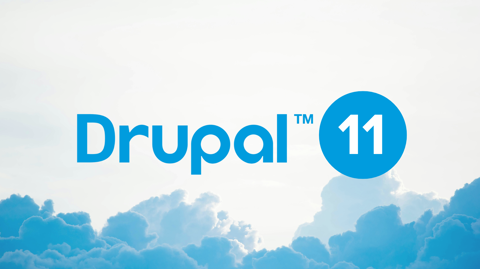Drupal 11: Our top tips for a successful upgrade

Drupal's latest upgrade brings exciting new features, security updates, and majorly improved performance. Our top tips will make sure you're ready to kickstart your upgrade.
Understanding Drupal Updates
Since its launch in 2001, Drupal has undergone numerous updates, each bringing enhanced features, better security, and improved performance. The collaborative nature of how Drupal is developed and maintained, means updates are rigorously tested by community members before being released to the masses, resulting in greater piece of mind for users. The most recent updates—Drupal 9, Drupal 10, and now Drupal 11—have focused on modernisation, ease of use, and ensuring that the platform remains cutting-edge in the ever-evolving digital landscape. Regular updates are crucial because they ensure that websites remain secure, efficient, and compatible with new technologies. They also help avoid the pitfalls of outdated code, which can lead to vulnerabilities and performance issues.
The Latest in Drupal 11
Recently, Drupal released its latest update - Drupal 11. The update introduces several key enhancements designed to improve both the developer and user experience. One of the significant changes in Drupal 11 is the further integration of modern PHP standards and the removal of deprecated code, making the platform more efficient and agile. The update also brings enhanced support for headless architectures, allowing developers more flexibility in building decoupled applications. Additionally, Drupal 11 includes improved media management tools, making it easier for content editors to manage and optimise digital assets.
Our Top Tips for a Smooth Drupal 11 Updagrade
Upgrading to Drupal 11 is an exciting step, but it can also be a bit daunting if you're not fully prepared. To help ensure a smooth transition, we’ve compiled our top tips for making the Drupal 11 upgrade process as seamless as possible.
1. Stay on Top of Deprecated Code
One of the most important things you can do as new versions of Drupal are released is to update deprecated code regularly. Don’t wait until you're ready to upgrade to start addressing these issues. By consistently keeping your code up-to-date, you'll save yourself a lot of time and headaches when it's time to move to a new update, as existing code will already be optimised and ready to transition.
2. Leverage Automation Tools
Automation tools can be a lifesaver when it comes to updating custom code. The Drupal community has developed a tool called Rector that can automatically update deprecated code for you. This can significantly reduce the time and effort needed to prepare your codebase for Drupal 11.
For the deprecations that can't be handled automatically, the Upgrade Status module is your go-to tool. It helps you identify any remaining deprecated areas of code, allowing you to tackle these issues manually before they potentially become a problem during the upgrade.
3. Update to the Latest Drupal 10.3 Version
Before upgrading to Drupal 11, make sure all of your environments are updated to the latest Drupal 10.3 version. This is a crucial step that can prevent a lot of potential issues down the line. We recommend that you also update all of your modules at this time, ensuring everything is compatible and ready for the transition to Drupal 11.
By following these tips, you'll be well on your way to a successful Drupal 11 upgrade. Remember, preparation is key, and by staying proactive, you can avoid common pitfalls and ensure a smooth upgrade process. At Reading Room we have an expert team of Drupal developers who have years of experience with implementing smooth Drupal upgrade processes. Our team pride themselves on being highly active in the Drupal community, meaning they have a direct impact on the development and maintenance of the platform. Get in touch now to ensure your site is prepared, optimised and secure.